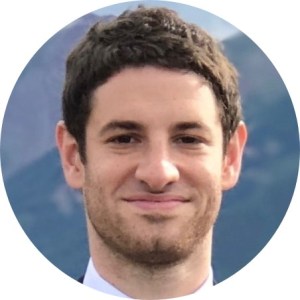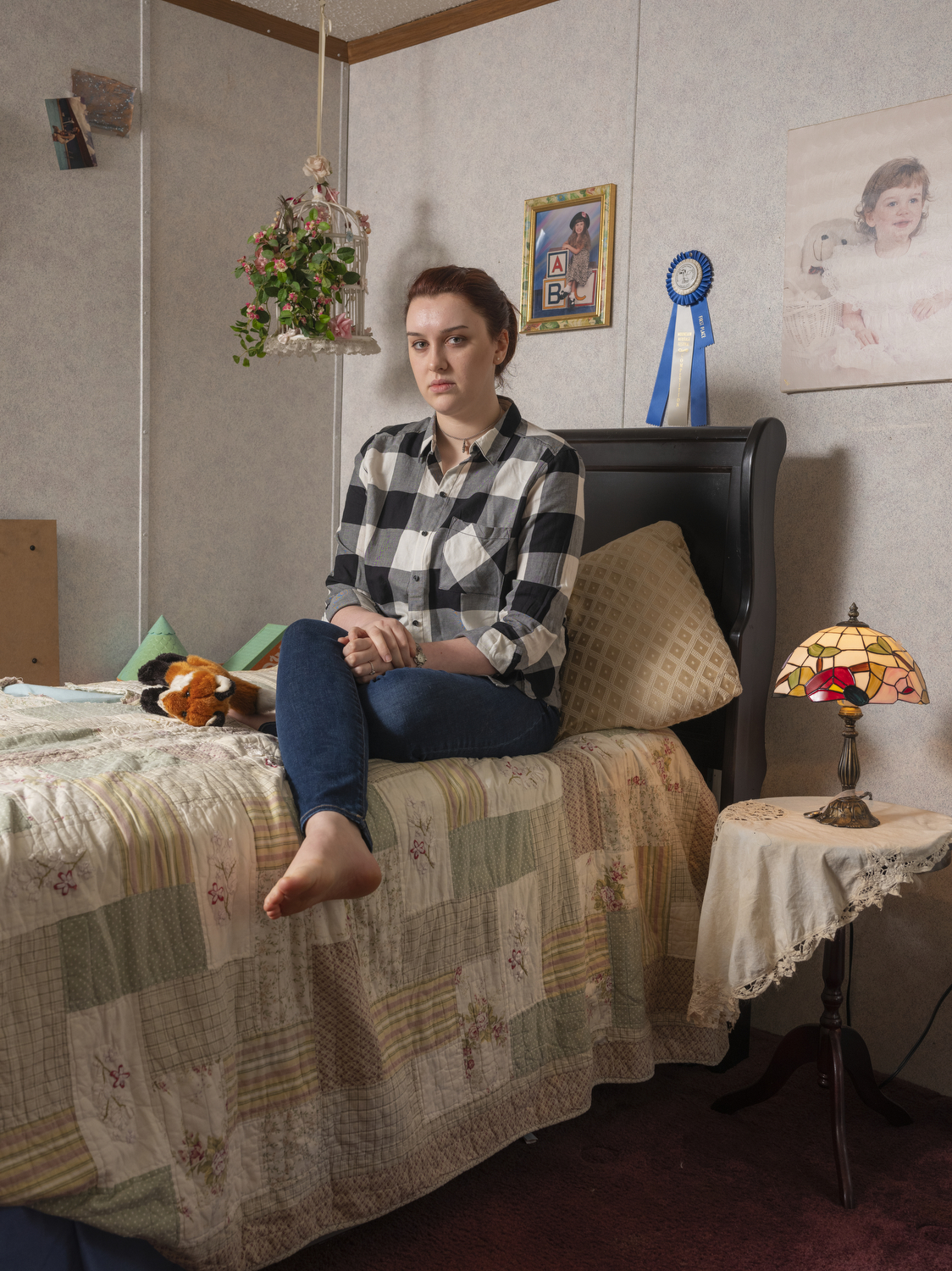I felt bad asking Zack Gray to repeat his story. He was used to it, he said. It’s the founding tale of his startup, Ophelia; he’d already told part of it in his commencement speech at Wharton, and to potential investors.
“There was a girl in my life,” he started. “I call her my girlfriend. We met when I was 14.” They dated, on and off, and stayed friends.
She was one of a generation who slid into opioid addiction through painkillers. A user for five years, she had the means to seek treatment after her addiction grew, but she didn’t want rehab or therapy.
Then, last spring, the call came: she had overdosed. By the time Gray got to the hospital, she was gone.
“I just started thinking, ‘What could I have done to prevent this?’” he said.
To answer that question, he researched. Since he was finishing up his MBA, the approach that seemed obvious was to build some kind of business or service. What if his friend had been able to get medicine to treat the chemical condition of addiction, without the embarrassment and hassle of group therapy? Would insurance companies buy in to his concept? Could he build a big company to help a lot of people like her? He’d need investors to believe in the idea.

As I listened to Gray explain what he was doing, headlines were washing over America. “A Torrent of Job Losses Threatens to Overwhelm the US Economy.” “Doctors Say Shortage of Protective Gear Is Dire.” “Coronavirus Hitting Homeless Population.”
It didn’t seem like a great time to be raising money.
I had originally planned to meet Gray in person. I was scheduled to fly out to California in March to attend the startup accelerator Y Combinator’s famous Demo Day. The event would host 1,000 investors and introduce them to nearly 200 vetted and prepped startups from around the globe. Ophelia was one of those startups.
I was going to Demo Day because venture capital had been America’s financial engine of innovation for years, and I wanted to see if that was still true. Many stats suggested it was: the number of venture capital firms in the US had risen from 946 in 2007 to 1,328 in 2019, and the amount of money they were managing had swollen from $170.6 billion in 2005 to $444 billion in 2019.
Venture capital has been the engine of US innovation for years. But investors are finding fewer ideas that fit their preferred pattern.
Not all the numbers were so positive, however. This largely white, largely male corner of finance has backed software companies that grow fast and generate large amounts of money for a shrinking number of Americans—companies like Google, Facebook, Uber, and Airbnb. But they don’t create many jobs for ordinary people, especially compared with the companies or industries they disrupt. And things have been slowing down. Recently, venture capitalists have found fewer and fewer ideas that fit their preferred pattern. By the end of 2019, the industry had $121 billion in “dry powder,” money in search of an entrepreneur or idea to invest in. I wanted to know what was going on.
As covid-19 took hold of the world, my plans to meet Gray and his peers changed. And suddenly, the questions became more urgent. Was venture capital producing the kinds of inventions society needs? Sure, when we have to (or want to) stay home, Zoom helps us work remotely, DoorDash keeps us fed, and Netflix gives us something to watch. But where was the cure, or the better protective gear, and why hadn’t venture capital—the financial engine of innovation—funded those ideas?
In the 1950s and ’60s, technology took us to space. In the 1980s and ’90s, technology helped spread democracy. Now our national mission was … to be able to never leave the house?

What capital wants
When I want to understand finance, I call my friend Charley Ellis. He was on the boards of the investment management company Vanguard and the Yale Endowment, and he wrote a bible for investors called Winning the Loser’s Game.
“The fact that it’s called venture capital is a terrible distraction,” he told me. “It’s really human resources.”
What he means is that successful venture capitalists aren’t necessarily those who find and fund the most innovative ideas, but the ones who know how to spot founders capable of building a company that will eventually be acquired or go public. The $1 million that might be spent to buy a 10% share of an early-stage business turns into much more if that company ends up being worth $10 billion.
Venture capital firms sell their services to investors like hedge funds, pension funds, and wealthy individuals, who take most of the returns. It’s a hard, fast process: to get even one or two big winners within the standard 10-year time frame, a venture capital fund invests in dozens of startups. Most companies that don’t grow fast enough get no more investment and die.
Venture capitalists sell themselves as the top of the heap in Silicon Valley. They are the talent spotters, the cowboys, the risk takers; they support people willing to buck the system and, they say, deserve to be richly rewarded and lightly taxed for doing so.
The image, however, doesn’t strictly match the history of the Valley, because it was “the system” that got everything started. After Sputnik launched the space race, the federal government poured money into silicon chip companies. Historian Margaret O’Mara documents this well in her book The Code: In the early 1960s, the US government spent more on R&D than the rest of the world combined. While that fire hose of cash flowed, the first venture capitalists found many winners to bankroll.
The link to government is still very much there in today’s technology companies. Google’s early work came out of the Clinton-era Digital Libraries project at Stanford, and the CIA was Palantir’s first customer in 2003—and its only one until 2008.
O’Mara says there isn’t anything wrong with tech companies’ being built through US research dollars. In fact, she argues, the most important decision of that era was for the government to pour money in without exerting too much control. But, she adds, a mythology has grown up that focuses on lone heroes and rule breakers rather than the underlying reasons for a company’s or technology’s success. “Hooray for the internet that it’s still cranking,” she says. “But you did not do this by yourself.”
In 2011, one of the bigger cowboys of venture capital, Marc Andreessen—the Netscape cofounder who now runs Andreessen Horowitz, one of Silicon Valley’s most influential investment firms—wrote a famous essay titled “Why Software Is Eating the World,” in which he described the destruction of middle–class jobs in America and predicted the venture profits of the following decade.
He was right: software companies are attractive to investors because they can generate large returns, often by replacing people in industries those software firms come to dominate—for example, travel agents, whose work is now done by flight booking websites.
Venture capitalists look for companies that can reach IPO size, which means they need an idea that can find a big market. These factors combine to produce a very specific set of requirements, which Y Combinator has reverse-engineered to great success.
“Investors are a simple-state machine,” Michael Siebel, the accelerator’s CEO, told me. “They have simple motivations, and it’s very clear the kind of companies they want to see.”
But some of the other inputs, either consciously or subconsciously, have been assumptions about the kind of person who can help generate outsize returns. The top founders “all seem to be white, male nerds who’ve dropped out of Harvard or Stanford and they absolutely have no social life,” John Doerr of Kleiner Perkins—one of the most influential investors in the Valley—noted in 2008. “So when I see that pattern coming in … it was very easy to decide to invest.”
Even as investors have found opportunities dwindling, as evidenced by that growing stash of “dry powder,” venture capital has continued to flow almost entirely to the same kinds of male founders. Only just over 2% of VC money in the US went to female founders in 2017 and 2018.
Still, many people in the Valley think this system works well.
“If you have a terrific founder with a terrific idea, they’re going to get funded,” one investor told me. “Never has the
system been more efficient at getting capital to the right people.”
When I came out of my office after that particular interview, I found that my 16-year-old daughter had been listening. “He doesn’t seem to realize he’s the Once-ler,” she said, referring to the character in Dr. Seuss’s The Lorax who thought he was making a great company when really he was destroying the environment.
Playing the game
In their search for the elusive home run, venture capitalists increasingly rely on accelerators like Y Combinator to find, filter, and train entrepreneurs who meet their needs. Twice a year, thousands of startups apply to be part of its three-month training program, in which they hone their ideas and learn to speak VC. Then, at the carefully scripted Demo Day, they are introduced to venture capitalists from around the world.
Founded in 2005 by an earlier generation of Silicon Valley luminaries, Y Combinator has helped launch Instacart, Dropbox, Airbnb, and Stripe, among others. Besides whatever they get from other investors, it gives each company $150,000 in exchange for a 7% ownership stake.
As of October 2019, according to Y Combinator, 102 of its graduates had a valuation of more than $150 million (not including some that didn’t want their valuations disclosed). Those companies, worth a combined $155 billion, have created 50,000 jobs in 15 years, the accelerator says. Of the new batch, I was drawn to Ophelia because it was a telehealth company, and Gray seemed unusually thoughtful.
He told me he had reservations about the venture capital model, especially right now. “I spent a lot of time philosophizing and rationalizing the moral rectitude of what I’m doing,” he said.
Still, he hoped to find an investor who would help him reach 500 patients in the first year, and many more later. Ophelia matched some criteria those investors typically look for: it was software-driven (allowing patients to do follow-up medical check-ins online), and—since some 2 to 3 million people in the United States are addicted to opioids—it had a large potential market.
Y Combinator advised Gray not to tell me how much funding he was seeking, because it looks bad if you don’t hit the mark. But his idea was built to appeal to investors. Other ideas he’d considered earlier were more like moonshots—hotels for homeless people, for example.
“The challenge here is to build a business that does good and can raise money. You need to figure out how to monetize it,” Gray said. “If you can help people and they can pay for it, that’s the key.” For all his idealism, he had adapted to a venture system that has evolved to act as the spear tip of profit-seeking capitalism and American individualism.
I asked Charley Ellis why he thought all these smart investors and entrepreneurs hadn’t put their time and money into health systems that could detect infectious diseases, or quicker ways to develop drugs and vaccines, or unemployment benefit systems that could cope with a sudden crush of applications.
Ellis pointed out that people have a hard time seeing outside their universe. “People inside an industry are so focused on creating money for their industry,” he said. “Nobody wants to stop the game.”
“The challenge here is to build a business that does good and can raise money … If you can help people and they can pay for it, that’s the key.”
Gray is definitely in the game. He lost his father, who worked on Wall Street, to cancer when he was a young teenager and then went to Columbia University, where he studied philosophy and astronomy. After he figured out that academia moved too slowly for him, he enrolled at Wharton, the University of Pennsylvania’s business school. This Ivy League pedigree gave him access to a world most entrepreneurs can’t dream of reaching. Adam Grant, a famous UPenn management professor, became an adviser to Ophelia and he discussed his idea with Tom McClellan, Barack Obama’s drug czar.
Listening to Gray, it was hard not to think about the advantages wealth and connections offer. These benefits have been quantified by researchers who studied 1 million US patent holders and looked at their parents’ income. Low-income students who scored in the top 5% in math were no more likely to become inventors than below-average math students from affluent families, they found. Meanwhile, if women, minorities, and children from low-income families were to invent at the same rate as white men from families with incomes in the top 20%, the rate of innovation in America would quadruple.
The advantages of wealth build on each other. Information is an important one: Gray knew from the beginning that he wanted to get into Y Combinator, which he’d heard about as a student. And getting into the accelerator, in turn, “de-risked and legitimized Ophelia,” he says. With that important stamp of approval, he was able to recruit a cofounder, Mattan Griffel, a more experienced entrepreneur who became his chief operating officer.
Slow evolution
Still, while Ophelia fits the traditional profile of an investable company for the likes of Y Combinator and the venture capitalists who go on to fund its startups, the industry has been changing, at least a little. Recent years have brought a new class of “impact investors,” who eschew the profit-obsessed venture capital model to focus on social good as well as high returns. And following a series of lawsuits and accusations of sexual harassment and discrimination, some new faces are getting a seat at the table.
Susan Choe, the founder of Katalyst Ventures, is an investor in Zipline, whose drones deliver medical supplies in poor countries where infrastructure is lacking. It’s valued at more than $1 billion. She also pointed me to All Raise, an organization that promotes women in venture capital. It reported in 2019 that a record 54 women became VC partners, though 65% of venture capital firms still have no female partners.
“Change is being driven by the fear of being left behind,” says Choe, who says that limited partners—investors—in her funds include executives from outside the US. Millennials tend to be drawn toward more diverse teams, too, she says.
She is among those who make the case that venture capital firms overlook products and services that cater to ignored communities or create new markets. “Investors are leaving money on the table, and they are missing innovation because the people that are running these VCs cannot relate to the preferences of people that are living outside their experiences,” says Lisa Green Hall, a fellow at Georgetown’s Beeck Center for Social Impact & Innovation and former CEO of Calvert Impact Capital. “In the white male culture … those cultures are extremely narrow. For women and people of color, those cultures are much more expansive.”
It brought to mind Jasmine Edwards, a black woman from Tampa, Florida, who launched an education startup that aimed to help schools with low-income students find better substitute teachers. With 200 substitute teachers on the platform and three schools as paying customers, the startup ran out of time and cash, and it folded. What could have been different if she had been able to raise the funds she needed to continue?

What are you building?
On April 18, Marc Andreessen emerged with another essay, this time occasioned by the pandemic and titled “It’s Time to Build.” He wrote:
“Every step of the way, to everyone around us, we should be asking the question, what are you building? What are you building directly, or helping other people to build, or teaching other people to build, or taking care of people who are building? If the work you’re doing isn’t either leading to something being built or taking care of people directly, we’ve failed you, and we need to get you into a position, an occupation, a career where you can contribute to building.”
He talked about skyscrapers and factories and said people should listen to Elon Musk. He called on everyone to build, although he didn’t make it clear what he would be building—or investing in—himself. (Andreessen declined to comment for this story.) I revisited the Andreessen Horowitz portfolio, which includes dozens of software winners, like Facebook, Box, Zynga, and Github, but not many companies building things that would have been useful in tackling the pandemic.
One sunny day, I took my two daughters over to Arlington Cemetery, right outside Washington, DC, to leave sunflowers on my mom’s grave. The radio was buzzing over Musk’s announcement that his new baby would be called X Æ A-12.
“Who would do that to their kid?” asked Quinn.
“Don’t worry,” Lillie said. “X Æ A-12 Musk will be able to pay other kids not to bully him.”
Before covid-19, I would have laughed off Andreessen’s bluster and Musk’s theatrics as inconsequential. But the pandemic made the gap between the world they live in and the world the rest of us inhabit seem even larger and more important.
“I’m grateful for all my donations, because they were given by people who don’t have a lot to give. But it’s not $2.7 million.”
Indeed, it has become clearer that things many people thought about life in America aren’t true. The nation wasn’t ready for a pandemic. It hasn’t made much progress on providing justice for all, as the riots provoked by police brutality in late May reminded us. And it is hard to claim that it remains the world’s most innovative economy. Software and technology are only one corner of the innovation playground, and the US has been so focused on the noisy kids in the sandbox that it has failed to maintain the rest of the equipment.
People who really study innovation systems “realize that venture capital may not be a perfect model” for all of them, says Carol Dahl, executive director of the Lemelson Foundation, which supports inventors and entrepreneurs building physical products.
In the United States, she says, 75% of venture capital goes to software. Some 5 to 10% goes to biotech: a tiny handful of venture capitalists have mastered the longer art of building a biotech company. The other sliver goes to everything else—“transportation, sanitation, health care.” To fund a complete system of innovation, we need to think about “not only the downstream invention itself, but what preceded it,” Dahl says. “Not only inspiring people who want to invent, but thinking about the way products reach us through companies.”
Dahl told me about a company that had developed reusable protective gear when Ebola emerged, and was now slowly ramping up production. What if it had been supported by venture funds earlier on?
That’s not going to happen, Asheem Chandna, a partner at Greylock, a leading VC firm, told me: “Money is going to flow where returns are. If software continues to have returns, that’s where it will flow.” Even with targeted government subsidies that lower the risks for VCs, he said, most people will stick with what they know.
So how can that change? The government could turn on the fire hose again, restoring that huge spray of investment that got Silicon Valley started in the first place. In his book Jump-Starting America, MIT professor Jonathan Gruber found that although total US spending on R&D remains at 2.5% of GDP, the share coming from the private sector has increased to 70%, up from less than half in the early 1950s through the 1970s. Federal funding for R&D as a share of GDP is now below where it was in 1957, according to the Information Technology and Innovation Foundation (ITIF), a think tank. In government funding for university research as a share of GDP, the US is 28th of 39 nations, and 12 of those nations invest more than twice the proportion the US does.
In other words, the private sector, with its focus on fast profits and familiar patterns, now dominates America’s innovation spending. That, Dahl and others argue, means the biggest innovations cannot find their long paths to widespread adoption. We’ve “replaced breakthrough innovation with incremental innovation,” says Rob Atkinson, founder of the ITIF. And thanks to Silicon Valley’s excellent marketing, we mistake increments for breakthroughs.
In his book, Gruber lists three innovations that the US has given away because it didn’t have the infrastructure to bring them to market: synthetic biology, hydrogen power, and ocean exploration. In most cases, companies in other countries commercialized the research because America’s way of investing in ideas hadn’t worked.
The loss is incalculable. It is potentially enough to have started entire industries like Silicon Valley, perhaps in areas that never recovered after the 2008 recession, or communities that are being hardest hit by the coronavirus.
World Bank economists determined that in 1900, Argentina, Chile, Denmark, Sweden, and the southern United States had similar levels of income but vastly differing capacities to innovate. This gap helped predict future income: the US and the Nordic countries sped ahead while Latin America lost ground. It’s been easy to dismiss people who say America is now more like a developing country than a developed one. But if the ability to solve society’s problems through innovation disappears, that may be the path it is on.
Game over
Despite being thrown into chaos because of covid-19, Y Combinator’s Demo Day turned out to be a success. More than 1,600 investors participated, up from the typical 1,000. Rather than being jammed into Pier 48 in San Francisco, investors logged on to a website where they saw a single-slide company summary, an eight- to 10-sentence description, and a three- to five-sentence team bio. Among the companies alongside Ophelia were Trustle, which gives parents access to a dedicated parenting and child development expert for $50, and Breezeful, which uses machine learning to find the best home mortgages.
Usually, about 80% of companies at Demo Day receive funding within six months of the event. The accelerator says it’s too early to provide this year’s stats. But it was a happy result for Ophelia, which got $2.7 million from General Catalyst, Refactor Capital, and Y Combinator itself.
Gray is aware that he landed the money when many face deep financial trouble. “It feels very strange,” he acknowledges. “But I felt and still feel extremely confident with what we’re building. The entire purpose of our business is to help people.”
But in a game run by venture capital, the people you end up helping are the ones who can pay, so investors can make their money. In today’s America, that leaves out a lot of people.

As I finished my reporting, a friend sent me an article about Nikki King, a young woman from Appalachia. She has more or less the same idea as Gray—providing medicine for addiction—but started out by focusing on her community. She runs a program in the courthouse in Ripley County, Indiana. In its first year, it treated 63 people, most of whom had not relapsed.
There’s no technology; broadband’s not so great in southern Indiana. She’s in a constant scramble for money, relying on grants, donations, and Medicaid reimbursements. I told her about Gray and his $2.7 million.
“Rub it in, why don’t you?” she said. With that much money, she could run five programs. “In this community here, we raised between $50,000 and $70,000,” she said. “I’m grateful for all my donations, because they were given by people who don’t have a lot to give. But it’s not $2.7 million.”

 from MIT Technology Review https://ift.tt/3ebyhXZ
from MIT Technology Review https://ift.tt/3ebyhXZvia IFTTT
Comments
Post a Comment